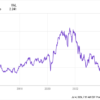Semiconductors are at the heart of the artificial intelligence (AI) revolution. Developing the most advanced AI models wouldn’t be possible without the data center graphics processing units (GPUs) designed by the likes of Nvidia (NASDAQ: NVDA).
That company added $2.8 trillion to its market capitalization over the past 18 months alone thanks to surging demand for its GPUs. But the value created by AI is now reaching other companies in the chip space, including Nvidia’s competitors like Advanced Micro Devices (NASDAQ: AMD).
Investors could profit from this trend by purchasing a cross-section of the entire chip industry, and an exchange-traded fund (ETF) like the iShares Semiconductor ETF (NASDAQ: SOXX) makes that really simple.

The iShares Semiconductor ETF recently completed a stock split
The iShares Semiconductor ETF delivered a compound annual return of 25.3% over the last 10 years, crushing the 12.7% annual gain in the S&P 500 index over the same period.
The ETF climbed to as high as $680 per share in March, which made it somewhat expensive for smaller investors. To address that problem, iShares executed a 3-for-1 stock split, which increased the number of shares in circulation threefold, and organically reduced the price per share by two-thirds. One share of the ETF now trades for around $254.
That’s positive news because a broader investor base can now benefit from this ETF’s momentum on the back of the AI boom. Here’s how it could turn an investment of $200,000 into $1 million over the long term — but don’t worry, investors with any starting balance can earn a fivefold return if this scenario plays out.
Every popular chip stock neatly packaged into one ETF
The iShares ETF owns 30 different semiconductor stocks, but it’s heavily weighted toward its Top 5 holdings which account for 37.8% of the total value of its portfolio:
|
Stock |
iShares ETF Portfolio Weighting |
|---|---|
|
1. Broadcom |
9.57% |
|
2. Nvidia |
8.60% |
|
3. Advanced Micro Devices (AMD) |
7.22% |
|
4. Applied Materials |
6.59% |
|
5. Qualcomm |
5.82% |
Data source: iShares. Portfolio weightings are accurate as of July 3, 2024, and are subject to change.
Broadcom (NASDAQ: AVGO) makes networking components for the data center, including switches that regulate how fast data travels from servers to devices. Its AI-related revenue soared 280% in its recent fiscal 2024 second quarter, and it’s forecasted to bring in a record $11 billion from AI during the whole of fiscal 2024 (which ends Oct. 30).
Nvidia makes the world’s most powerful GPUs for developing AI models. Its data center revenue has grown by triple-digit percentages in each of the last four quarters, and the company still can’t keep up with demand. It’s gearing up to ship new GPUs based on its latest Blackwell architecture, like the GB200 which can inference AI models five times faster than its industry-leading H100. It could save developers truckloads of money, as they often pay for computing capacity by the minute.
AMD is trying to compete with Nvidia in the data center market with its new MI300 GPU. However, the company already has a dominant 90% share in the processor market for AI-enabled personal computers, which could be an incredible opportunity as AI migrates from the data center to the devices we use every day.
Outside of its top five, the iShares ETF holds a number of other stocks critical to the AI industry. Taiwan Semiconductor Manufacturing manufactures half of the world’s chips, including those designed by Nvidia and AMD. Micron Technology, on the other hand, makes memory and storage chips which are key to processing AI workloads. Its latest HBM3e memory solution powers some of Nvidia’s latest GPUs.
Turning $200,000 into $1 million
Since its inception in 2001, the iShares ETF has delivered a compound annual return of 11.7%. However, it delivered a compound annual return of 25.3% over the last 10 years on the back of explosive demand for chips in segments like smartphones, cloud computing, enterprise software, and now, AI.
The table below shows how long it could take for the iShares ETF to turn an investment of $200,000 into $1 million, based on three scenarios:
-
Scenario 1: The ETF delivers an annual return of 11.7% going forward, matching its long-term average.
-
Scenario 2: The ETF delivers an annual return of 18.5% going forward (midpoint of scenarios 1 and 3).
-
Scenario 3: The ETF delivers an annual return of 25.3% going forward, matching its 10-year average.
|
Starting Balance |
Compound Annual Return |
Time to Reach $1 Million |
|---|---|---|
|
$200,000 |
11.7% |
15 years |
|
$200,000 |
18.5% |
10 years |
|
$200,000 |
25.3% |
8 years |
Calculations by author.
In short, the ETF could deliver a fivefold return over the next 15 years even if it reverts back to its long-term annual average return of 11.7%. But AI could be the greatest financial opportunity the chip sector has ever faced. According to Goldman Sachs, AI could add $7 trillion to the global economy over the next decade, and Cathie Wood’s Ark Investment Management places that figure at $200 trillion by 2030!
With that said, this ETF will almost certainly underperform if AI fails to live up to the hype, because stocks like Nvidia would lose a large chunk of the gains they generated over the past year. There is also a possibility that AI software eventually becomes a bigger value creator than AI hardware, which could shift the gains to stocks outside the chip space. That’s why it’s best to buy the iShares ETF as part of a balanced portfolio.
Should you invest $1,000 in iShares Trust – iShares Semiconductor ETF right now?
Before you buy stock in iShares Trust – iShares Semiconductor ETF, consider this:
The Motley Fool Stock Advisor analyst team just identified what they believe are the 10 best stocks for investors to buy now… and iShares Trust – iShares Semiconductor ETF wasn’t one of them. The 10 stocks that made the cut could produce monster returns in the coming years.
Consider when Nvidia made this list on April 15, 2005… if you invested $1,000 at the time of our recommendation, you’d have $771,034!*
Stock Advisor provides investors with an easy-to-follow blueprint for success, including guidance on building a portfolio, regular updates from analysts, and two new stock picks each month. The Stock Advisor service has more than quadrupled the return of S&P 500 since 2002*.
*Stock Advisor returns as of July 2, 2024
Anthony Di Pizio has no position in any of the stocks mentioned. The Motley Fool has positions in and recommends Advanced Micro Devices, Applied Materials, Goldman Sachs Group, Nvidia, Qualcomm, Taiwan Semiconductor Manufacturing, and iShares Trust-iShares Semiconductor ETF. The Motley Fool recommends Broadcom. The Motley Fool has a disclosure policy.
Nvidia and AMD Could Help This Stock-Split ETF Turn $200,000 Into $1 Million was originally published by The Motley Fool
EMEA Tribune is not involved in this news article, it is taken from our partners and or from the News Agencies. Copyright and Credit go to the News Agencies, email news@emeatribune.com Follow our WhatsApp verified Channel





